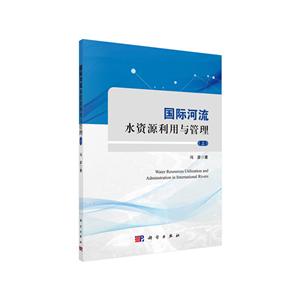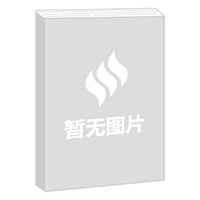扫一扫
关注中图网
官方微博
本类五星书更多>
-
>
湖南省志(1978-2002)?铁路志
-
>
公路车宝典(ZINN的公路车维修与保养秘籍)
-
>
晶体管电路设计(下)
-
>
基于个性化设计策略的智能交通系统关键技术
-
>
德国克虏伯与晚清火:贸易与仿制模式下的技术转移
-
>
花样百出:贵州少数民族图案填色
-
>
识木:全球220种木材图鉴
国际河流水资源利用与管理(上) 版权信息
- ISBN:9787030621948
- 条形码:9787030621948 ; 978-7-03-062194-8
- 装帧:平装胶订
- 册数:暂无
- 重量:暂无
- 所属分类:>>
国际河流水资源利用与管理(上) 本书特色
《国际河流水资源利用与管理(上)》以国际河流水资源利用和管理制度、机制建设及案例分析为主线,以“国际河流水资源概念—国际河流分布—国际河流水资源权属—流域机构建设”为脉络,厘清了近年来受社会各界关注的国际河流水资源概念、利用与管理涉及的国家间权利与义务、国际法基本原则等,为国际河流水资源的利用与管理建立起一个较为清晰的理论框架。
国际河流水资源利用与管理(上) 内容简介
本书以国际河流水资源利用和管理的制度与机制建设为主线, 以“国际河流水资源概念—国际河流分布—利用与管理主要问题—国际河流水资源权属—国际法原则—流域机构建设”为脉络, 由浅入深地厘清了近年来受社会各界关注国际河流水资源概念、水资源利用与管理涉及的国家间权利与义务、国际法基本原则等, 为国际河流水资源的利用与管理建立起一个较为清晰的理论框架。
国际河流水资源利用与管理(上) 目录
目录**章 绪论 1**节 “国际河流”等概念在中文文献中的内涵及其发展 1一、“国际河流”和“国际化河流”等概念内涵及变化 2二、“跨境河流”与“跨界河流”概念内涵及变化 5第二节 “international river”等在英文文献中的内涵及发展 8一、“international river”概念内涵及变化 8二、“transboundary waters”等相关概念应用与发展 11三、国际河流水资源再定义 12第二章 国际河流分布及水资源利用 13**节 全球国际河流分布 13第二节 亚洲国际河流分布 14第三节 中国国际河流分布 16第四节 国际河流水资源利用与管理的主要问题与发展 18第三章 国际河流水资源权属 21**节 水资源基本特征及其管理 21一、水资源以及基本特征 21二、水资源管理 24第二节 国家水资源管理中“水权” 28一、中国的水权制度 28二、英国的水权制度 31三、美国的水权制度 32四、澳大利亚的水权制度 33五、印度的水权制度 34六、南非的水权制度 35七、德国的水权制度 36八、日本的水权制度 36第三节 国际河流水资源权属问题 37一、国际河流水资源特征与流域国的资源主权 37二、国际河流水资源权属理论 45三、国际河流水资源权属理论的变化特征 49第四节 国际河流水资源权属的再认识 51一、国际河流水资源权属与国家水权的差异 51二、跨境水资源权属界定 53第四章 国际河流水资源管理制度建设 63**节 国际水法形成与发展 63一、概述 63二、国际水法的形成 64三、国际水法的渊源 64四、国际水法的发展 66第二节 国际水法主要原则 70一、基本原则及其内涵 70二、其他重要原则及其内涵 74第三节 《国际水道非航行使用法公约》影响力探讨 78一、《国际水道非航行使用法公约》产生与生效过程简况 78二、《国际水道非航行使用法公约》缔约国差异分析 79三、《国际水道非航行使用法公约》约束力差异及影响力判识 87第五章 国际河流流域机构建设 90**节 国际河流流域机构作用及发展 90一、流域机构及其在国际河流水资源管理中的作用 90二、国际河流流域机构建设概况 92第二节 流域机构及职能 93一、机构类型 93二、流域机构内部设置 95三、流域机构主要职能 97第三节 流域机构能力建设 99一、决策机制构建 99二、秘书处建设 108三、执行机构建设 112四、机构运行经费来源及费用分摊机制 118五、流域机构能力建设基本状况 120参考文献 123附表 135ContentsChapter 1 Introduction 1Section I Connotation and development of the concepts related to “international river” in Chinese literature 11. “Guoji Heliu”and “Guojihua Heliu” 22. “Kuajing Heliu” and “Kuajie Heliu” 5Section II Connotation and development of the concepts related to “international river” in English literature 81. The connotation of “international river” and its evolution 82. Adoption and development of the concept of “transboundary waters” 113. Redefinition of “water resources” in international rivers 12Chapter 2 Distribution of international rivers and issues concerning transboundary waters 13Section I International rivers in the world 13Section II International rivers in Asia 14Section III International rivers related to China 16Section IV Changes and issues related to transboundary waters 18Chapter 3 Rights to transboundary waters 21Section I Basic characteristics and management of water resources 211. Water resources and their characteristics 212. Water resources management 24Section II Regimes of water rights in different countries 281. Water rights regime in China 282. Water rights regime in United Kingdom 313. Water rights regime in United States of America 324. Water rights regime in Australia 335. Water rights regime in India 346. Water rights regime in South Africa 357. Water rights regime in Germany 368. Water rights regime in Japan 36Section III Issues concerning rights to transboundary waters 371. Transboundary waters and national sovereignty over water resources 372. Theories on rights to transboundary waters 453. Evolution of the theories on rights to transboundary waters 49Section IV Recognition of rights to transboundary waters 511. Differences between rights to transboundary waters and national water rights 512. Redefinition of rights to transboundary waters 53Chapter 4 Construction of transboundary waters legal systems 63Section I Formation and development of international water law 631. Overview 632. Formation of international water law 643. Sources of international water law 644. Development of international water law 66Section II Major principles of international water law 701. Basic principles and their connotations 702. Other important principles and their connotations 74Section III Influence of “Convention on the Law of the Non-navigational Uses of International Watercourses” 781. A brief overview on the generation and entry into force of the Convention 782. Differences among the parties to the Convention 793. Differences of the Convention’s binding force and influence 87Chapter 5 Construction of International River basin organizations 90Section I Roles and development of international river basin organizations 901. River basin organizations and their roles in transboundary water management 902. Introduction to the construction of international river basin organizations 92Section II International river basin organizations and their responsibilities 931. Types of river basin organizations 932. Internal divisions of river basin organizations 953. Major responsibilities of river basin organizations 97Section III Capacity building of river basin organizations 991. Arrangement of decision-making processes 992. Secretariat 1083. Implementing division 1124. Sources of operational funds and cost-sharing 1185. Relationships among the organizational divisions 120References 123Attached tables 135
展开全部
书友推荐
- >
我从未如此眷恋人间
我从未如此眷恋人间
¥24.4¥49.8 - >
自卑与超越
自卑与超越
¥12.7¥39.8 - >
名家带你读鲁迅:故事新编
名家带你读鲁迅:故事新编
¥13.0¥26.0 - >
史学评论
史学评论
¥22.7¥42.0 - >
小考拉的故事-套装共3册
小考拉的故事-套装共3册
¥36.7¥68.0 - >
诗经-先民的歌唱
诗经-先民的歌唱
¥13.5¥39.8 - >
经典常谈
经典常谈
¥12.7¥39.8 - >
龙榆生:词曲概论/大家小书
龙榆生:词曲概论/大家小书
¥13.0¥24.0
本类畅销
-
4.23文创礼盒A款--“作家言我精神状态”
¥42.3¥206 -
4.23文创礼盒B款--“作家言我精神状态”
¥42.3¥206 -
一句顶一万句 (印签版)
¥40.4¥68 -
百年书评史散论
¥14.9¥38 -
1980年代:小说六记
¥52.8¥69 -
中图网经典初版本封面-“老人与海”冰箱贴
¥20¥40






















